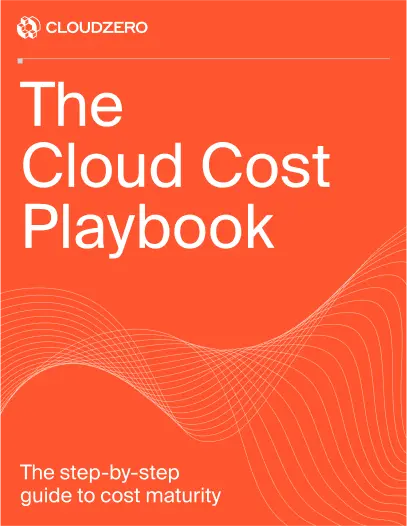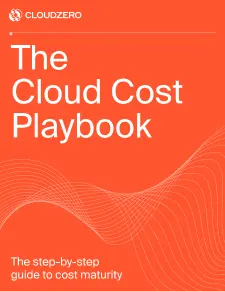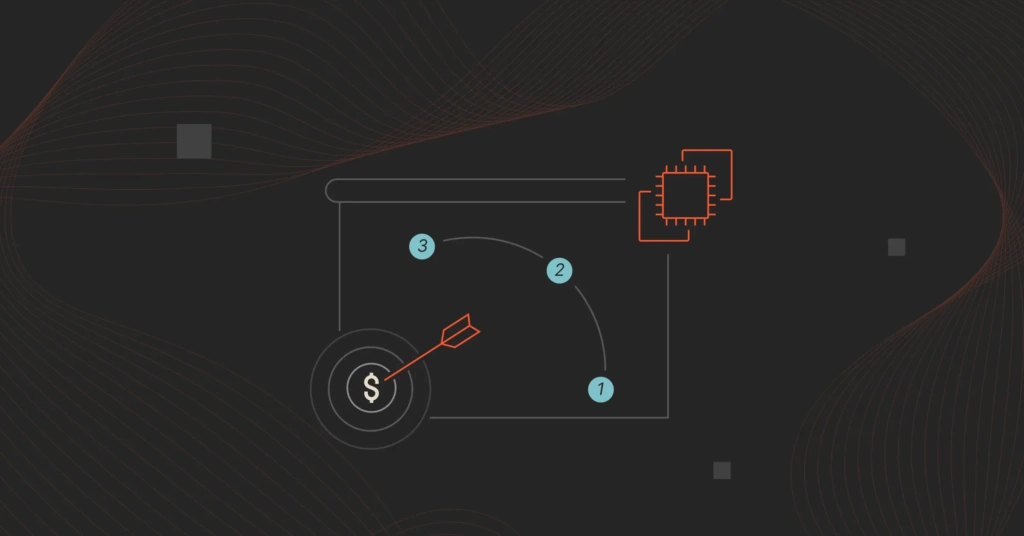As the Senior Manager of Finance & Accounting here at CloudZero, and with a career in FP&A that includes tenures at large public companies, I’ve spent a significant amount of time observing the interactions between the folks who plan the company’s budget and those who spend it.
While engineering and operations teams focus on the execution side, my team ensures that the company has the resources required to make each endeavor a success.
I want to share a crucial insight that too often goes unspoken across company departments: If your team needs a cloud cost platform to keep AI and other cloud spending on track for fiscal year 2026, the time to request that budget item is not during that fiscal year, but beforehand.
If you don’t plan ahead in this fashion, this can create friction within the organization between engineering, operations, finance, and even executives themselves. The bulk of that frustration can fall on finance when delivering on an urgent ask — a situation that could have been preempted ahead of time.
Put In A Budget Request Now
In short: it’s crucial you start the conversation early rather than waiting until you’re ready to buy.
That’s because the window of opportunity for bookmarking next year’s funds typically runs from September through November. Acting within this time frame can make the difference between a seamless approval and a frustrating rejection of your request.
That’s because FP&A teams follow a predictable rhythm.
We’re not just pulling formulas and budgets out of thin air at the beginning of the year; we spend several months building the company’s financial plan for the entire next year.
Internally, this process might look a little different in your company than in others, but the overall pattern is the same. The financial team typically reviews the organization’s spending trends and speaks with engineering and operations leaders about managing their respective budgets.
If your FP&A team contacts you sometime during the months of September, October, or November, this is your shot to ask for what you want. Take this as a signal that they’re preparing next year’s budget and they want to know what your needs are going to look like.
Even if you don’t receive a direct request for your budget needs, the door works both ways. Approach your FP&A team during this window to secure the best chance of getting your budget request approved.
If your FP&A team contacts you sometime during the months of September, October, or November, this is your shot to ask for what you want. Even if you don’t receive a direct request for your budget needs, the door works both ways.
Asking Early Closes Internal Communication Gaps
One major issue I consistently see is that team leaders in charge of forecasting, budgeting, or managing cloud spend start negotiations at the last minute.
To make matters worse, there’s usually a communication gap between engineers and finance team members. Engineers — who are rightly focused on their day-to-day tasks — might not always be aware that September marks the beginning of the next fiscal year’s budgeting season. And often, finance teams fail to convey this information.
What frequently happens is that engineers get to the end of the year (late November or even December) and then they start thinking about what they can improve on for the next year. Perhaps they’ve had some run-ins with finance telling them to rein in a spending snowball and they think, “Hey, it would be great if we had a cost management platform that could help us control our spend.”
One engineer (or several) might spend weeks researching a tool that could solve their problems. Engineers are wonderfully thorough by nature, so this vetting process may include an extensive testing or “proof of value” process. If the team is happy with the results, they’ll take it to finance and suggest purchasing the software for the next year.
This could be the most well-thought-out and best-informed initiative in the history of the company.
Finance may love the idea of implementing a cost management platform.
And yet the request may still get denied.
Why? Because finance simply doesn’t have the time or resources to pull together enough funds when they’re approached after this crucial budgeting window has closed.
Finance almost inevitably responds by saying, “You don’t have the budget for this,” and everyone involved leaves frustrated.
Timing is everything. This scenario would likely end much differently if engineering put forward a request for cost management software in October rather than in January or February. You don’t even need to be certain you’ll eventually purchase the item, and you don’t need to have an exact quote. All you have to do is bring up the fact that you’d like to explore the option and request to set aside some funds.
It can be as simple as saying, “Can we bookmark some funds for a cost tool? This is an initiative I’d really like to focus on next year, because the executives have been expressing some concern over our rising AWS costs. I think getting some visibility into the issue would help us solve the problem.”
It can be as simple as saying, “Can we bookmark some funds for a cost tool? This is an initiative I’d really like to focus on next year, because the executives have been expressing some concern over our rising AWS costs. I think getting some visibility into the issue would help us solve the problem.”
Chances are, your FP&A team will be happy to hear your enthusiasm to reduce costs. They’ll likely work with you and find room for your idea in their financial plan.
The bottom line: It is far easier to procure the software you want when you’ve already bookmarked that item in the budget for the year.
Your estimates don’t have to be perfect. Just get the request on paper.
Your request for cost management software could play out very differently depending on when you ask:
Scenario A: The early “low stakes” request
In October: “I want to look into a tool to help us manage our rising cloud costs. I don’t have any details yet, but I’m ready to start exploring options. Can we earmark $100k for this initiative next year?”
6 months later: “Remember the tool we budgeted for? I found the right solution, but it’s $125k rather than the $100k I asked for.”
In this instance, hopefully they put in the placeholder in October, and even though your initial estimate was off, you’re only on the hook for justifying an extra $25,000 expenditure.
Scenario B: The late, “you can’t possibly be suggesting this” request
In January: “I’ve thoroughly researched and tested cost management platforms — something I think could really help us make this year the most efficient yet — and found the perfect tool for $125k!”
The prompt reply: “We have no budget for this.”
Now, you’re left pitching the value of the entire cost of the platform rather than simply trying to find some extra wiggle room. You’re on defense, and finance is going to need a hefty dose of convincing to rearrange their whole budget for this one initiative — even if it does sound appealing.
Scenario A is clearly more desirable than Scenario B. Even if you don’t receive an outright denial for your January pitch, you’ll have to build a thorough business case to get your ideas heard. You might also be forced into a “net-neutral” scenario, where you have to eliminate other costs in order to make room for this new software.
While you can successfully navigate this situation, it’s a headache you can avoid altogether if you time your conversations earlier.
CloudZero Turns Tricky Conversations Into Powerful Partnerships
My goal (and the goal of all of us at CloudZero) is to bridge the gap between engineering and finance and find a place where both teams get what they need. A timely budget conversation is a great first step toward building that bridge — especially if the conversation leads to your organization adopting a cost management platform that will further close the communication gap and build AI and cloud cost visibility.
Regardless of the ultimate outcome, the conversation itself is still a win. You’ve successfully opened the door for future strategic dialogues:
- “If I don’t use these funds, what other initiatives might be worth exploring?”
- “Could I give these funds back to you if I don’t end up using them?”
- “What other expenditures make up my budget? Can I rearrange or compromise on some of these expenses?”
- “If we do purchase cost management software, here are the ways I expect it to positively affect our budget in the future.”
These talking points show your finance team that you care about managing resources effectively. And if you do opt to purchase an AI and cloud cost management solution like CloudZero, you’ll have placed the first crucial foundation blocks for a proactive, responsive relationship between departments. Not to be cheesy in a conversation about finances — but that’s priceless.








